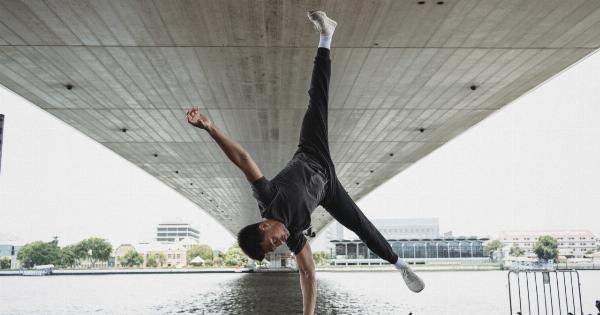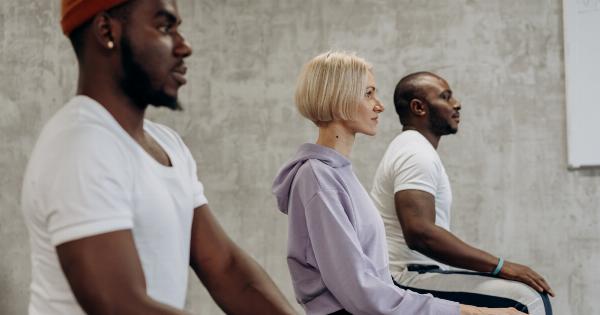Flexibility is a crucial component of physical fitness. It refers to the ability of your joints and muscles to move through a range of motion without any pain or stiffness.
While many people focus on strength and cardiovascular endurance when assessing their fitness levels, flexibility often takes a backseat. However, neglecting flexibility can lead to various musculoskeletal issues, hinder performance in physical activities, and increase the risk of injuries.
In this article, we will explore the importance of flexibility and provide you with ways to assess and improve your flexibility.
Why is flexibility important?
Flexibility plays a significant role in maintaining overall physical well-being. Here are some reasons why flexibility is important:.
Improved performance
Having good flexibility can enhance your performance in various physical activities. Whether you’re an athlete, a fitness enthusiast, or simply enjoy recreational activities, being flexible allows you to move more efficiently.
It enables you to have a wider range of motion, improve coordination, and maintain proper form during exercises or sports. Athletes who participate in activities like gymnastics, dancing, or martial arts greatly benefit from good flexibility as it enables them to execute complex movements with ease and reduce the risk of injury.
Injury prevention
One of the major benefits of flexibility is its role in injury prevention. When your muscles and joints are flexible, they can better absorb the stress and impact from physical activities, reducing the risk of strains, sprains, and other injuries.
Tight and stiff muscles, on the other hand, are more prone to tears and pulls. Proper flexibility ensures that your body is better prepared to handle sudden movements, twists, and turns, decreasing the likelihood of accidents or mishaps.
Improved posture and balance
Flexibility is closely linked to good posture and balance. Tight muscles can create imbalances and pull your body out of alignment, leading to poor posture. This can result in various issues such as back pain, neck pain, and muscle imbalances.
By improving flexibility, you can release tension in tight muscles, allowing your body to find its natural alignment and maintain a correct posture. Additionally, flexibility enhances proprioception, which is your body’s awareness of its position in space. This, in turn, improves balance and reduces the risk of falls, especially in older adults.
Assessing your flexibility
Now that you understand the importance of flexibility, it’s time to assess your own flexibility levels. Here are some simple tests you can perform to determine your flexibility:.
1. Sit and reach test:
The sit and reach test is a common measure of lower back and hamstring flexibility. Here’s how to perform it:.
– Sit on the floor with your legs extended in front of you and your feet against a box or wall.
– Slowly reach forward with your hands, while keeping your knees straight, and try to touch your toes.
– Measure the distance you can reach beyond your toes. You can use a ruler or a measuring tape for this.
The further you can reach, the greater your flexibility in your hamstrings and lower back.
2. Shoulder flexibility test:
Shoulder flexibility is important for various upper body movements. Here’s a simple test you can do to assess your shoulder flexibility:.
– Stand tall with your feet shoulder-width apart.
– Extend your arms straight out in front of you at shoulder height, with your palms facing down.
– Slowly raise your arms upward, keeping them straight, until they are pointing towards the ceiling.
– Measure the angle at which your arms are pointing upwards.
The greater the angle, the better your shoulder flexibility.
3. Hip flexor test:
Tight hip flexors can lead to numerous issues, especially in individuals who spend a significant amount of time sitting. Here’s how you can assess your hip flexor flexibility:.
– Stand facing a wall, approximately an arm’s length away.
– Place one foot in front of the other, with your back foot being the one closest to the wall.
– Keeping your back straight, bend your front knee and lean forward, trying to touch the wall with your knee.
– If your knee touches the wall without lifting your back heel or losing balance, your hip flexors are adequately flexible.
Improving flexibility
If your flexibility tests didn’t turn out as you hoped, don’t worry! Flexibility can be improved with regular stretching and specific exercises. Here are some tips to help you enhance your flexibility:.
1. Stretching exercises:
Include a variety of stretching exercises in your fitness routine. Static stretches, where you hold a position for 15-30 seconds, can help lengthen and relax your muscles.
Dynamic stretching, involving controlled movements, can be performed before a workout to warm up your muscles. Examples of stretching exercises include hamstring stretches, quadriceps stretches, chest stretches, and calf stretches.
2. Yoga or Pilates:
Yoga and Pilates are excellent practices for improving flexibility. They involve a combination of stretching and strengthening exercises that target different muscle groups.
Regular participation in these activities can lead to increased flexibility, improved posture, and enhanced mind-body connection.
3. Foam rolling:
Foam rolling is a self-myofascial release technique that helps to release tension and tightness in muscles. By rolling on a foam roller, you can perform a self-massage that aids in muscle recovery and improves flexibility.
Foam rolling can be particularly beneficial for individuals with tight muscles or trigger points.
4. Incorporate dynamic movements:
While static stretching is essential, incorporating dynamic movements into your workouts helps improve flexibility while also warming up your muscles. Examples of dynamic exercises include arm and leg swings, hip circles, and neck rolls.
These movements stimulate blood flow to the muscles and prepare them for more intense activity.
5. Gradual progression:
When working on improving flexibility, it’s crucial to progress gradually. Avoid forcing your body into positions that cause pain or discomfort. Instead, start with stretches and exercises that feel challenging but doable.
Over time, as your flexibility increases, you can gradually increase the intensity and duration of your stretches.
Conclusion
Don’t overlook the importance of flexibility in your fitness journey. Whether you’re an athlete, a fitness enthusiast, or someone who wants to maintain good overall health, having adequate flexibility is essential.
By regularly assessing and improving your flexibility, you can enhance your performance, prevent injuries, maintain proper posture, and enjoy a wide range of motion. Incorporate stretching exercises, practice yoga or Pilates, use foam rolling, and gradually progress towards your flexibility goals.
Remember, flexibility is a lifelong journey, so be patient and consistent in your efforts to reap the benefits it offers.






























